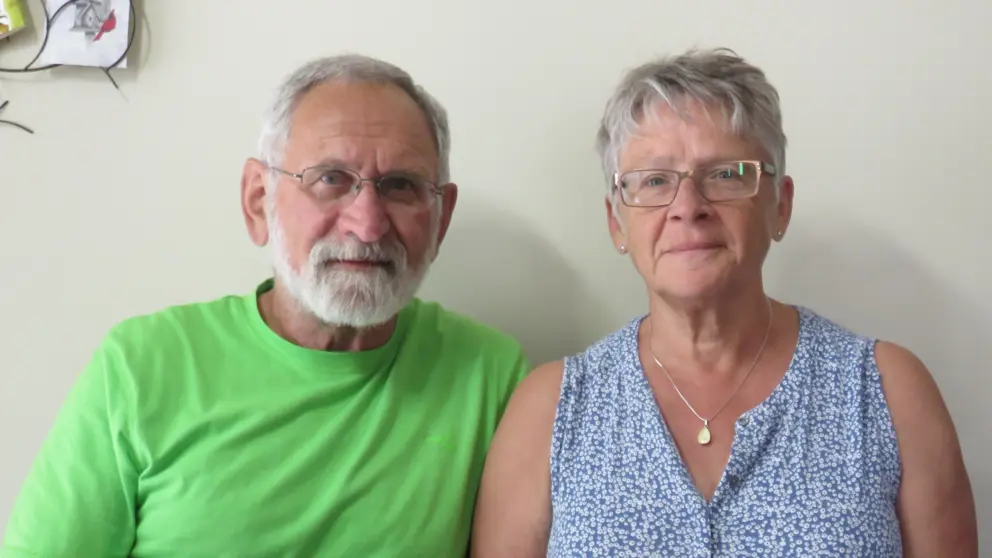On Jan. 29, 2020, Ken and Evelyn Paton were fast asleep in their home in Steinbach, Man., an hour south of Winnipeg, when Ken appeared to be having a bad dream. When Evelyn tried to wake him, Ken’s right side was too weak for him to get up. He couldn’t speak, and his eyes kept focusing to the left. Evelyn knew something was very wrong, so she called 9-1-1.
The benefits of virtual care
Thankfully, Bethesda Regional Health Centre joined the Manitoba Telestroke network in January 2019 – and that’s exactly where paramedics took Ken.
Using videoconferencing technology, Telestroke enables stroke patients to be assessed at one of Manitoba’s seven rural Telestroke sites by a stroke neurologist located in Winnipeg. After assessing the patient virtually and reviewing the CT scan, the neurologist determines a treatment plan for the patient. This may include the delivery of a time-sensitive clot-busting medication called alteplase, delivered at the site by trained nurses and physicians, or a transfer to Winnipeg for endovascular thrombectomy (EVT).
“Calling 9-1-1 is the fastest way for stroke patients to receive emergency care when every second counts,” said Dr. Denis Fortier, VP – Medical Services at Southern Health-Santé Sud. “Telestroke virtually connects rural patients, local physicians, and stroke specialists to prevent delays when someone is having a stroke. The Telestroke protocol allows the site to be ready before the patient arrives and is saving lives when patients in the region need immediate access to emergency stroke care.”
We live in a time when working virtually has become commonplace. Telestroke has provided virtual care in Manitoba since 2014, with life-saving results for many of the 763 people who have been assessed through the system. Across Canada, most provinces have similar programs to coordinate virtual care for acute stroke. A growing number of these have expanded to include stroke prevention and rehabilitation services.
The Telestroke protocol is saving lives.
In Ken Paton’s case, he was assessed with a major stroke for which he received alteplase in Bethesda. He was then transferred by ambulance to Health Sciences Centre Winnipeg, home of Manitoba’s comprehensive stroke centre, for EVT: doctors threaded a retrievable stent through blood vessels up to his brain, and the clot was captured and removed. The procedure restored crucial blood flow to Ken’s brain and prevented permanent damage, restoring his life!
Evelyn and her sons saw Ken within an hour after the procedure; he was conscious, speaking and able to move – Ken was back! Three days later he was transferred back to Bethesda for 10 days of rehabilitation. Today, Ken is doing great – you can’t even tell that he’s had a stroke.
Building better virtual care
The development of Telestroke programs in most provinces has been on the leading edge of what is known as virtual care. The COVID-19 pandemic has triggered explosive growth in virtual care across the healthcare system, encompassing everything from telephone appointments with family doctors, to virtual rehabilitation sessions for people recovering from a stroke or heart attack.
Heart & Stroke is leading development of policies and tools to improve delivery of virtual care, identify opportunities for using it, and empower both healthcare providers and their patients.
Getting the right care quickly is critical when it comes to a stroke: 1.9 million brain cells are lost every minute after a stroke starts. The sooner blood flow is restored to the brain, the greater the potential for a good outcome. Heart & Stroke urges you to learn the FAST signs of stroke, and to understand that you need to call 9-1-1 or your local emergency number right away. You could save the life of someone you love!
- Learn the FAST signs of stroke

